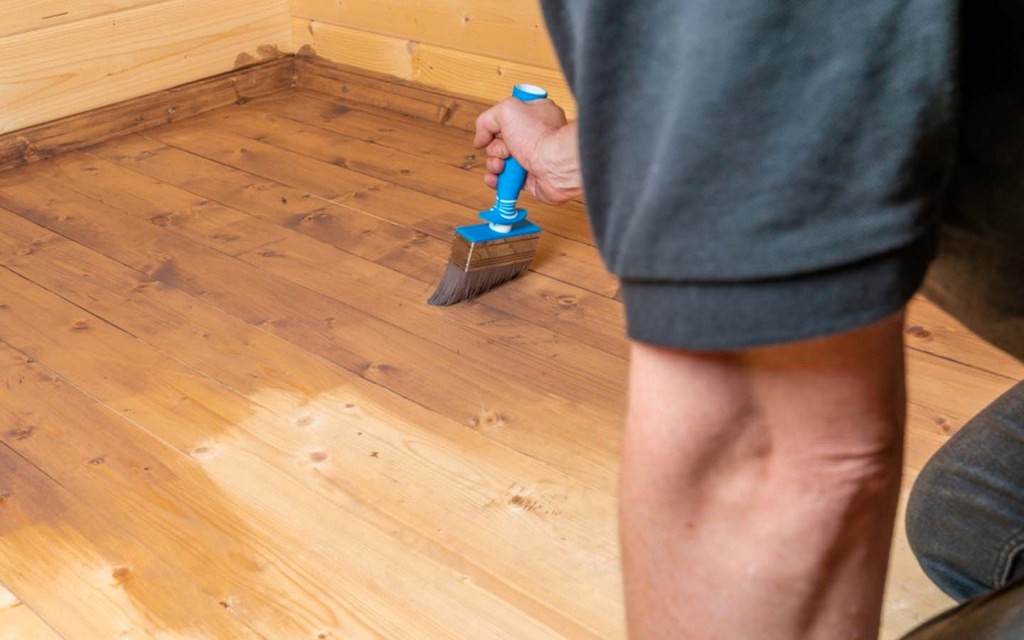The Best Way to Sand Hardwood Floors: A Comprehensive Guide

Maintaining the beauty and longevity of hardwood floors requires proper care and periodic refinishing. Sanding is a crucial step in the refinishing process, as it helps remove scratches, dents, and imperfections, revealing a smooth surface ready for staining or sealing.
However, sanding hardwood floors can be daunting without the right knowledge and techniques. In this comprehensive guide, we will walk you through the best way to sand hardwood floors, ensuring excellent results and a stunning finish.
Assess the Floor’s Condition
Before diving into the sanding process, it’s essential to evaluate the condition of your hardwood floors. Inspect the surface for deep scratches, stains, or unevenness. Identifying problem areas will help you determine the extent of sanding required and plan accordingly. If the floor has extensive damage, consulting a professional like Wichita Wood Floor Sanding might be necessary for a more comprehensive restoration.
Gather the Right Tools and Materials
To achieve optimal results, it is crucial to have the right tools and materials on hand. Here’s a list of essentials you’ll need for sanding hardwood floors:
- Drum sander: This heavy-duty tool is used for initial sanding and levelling the floor.
- Edger sander: Designed for sanding hard-to-reach areas such as corners and edges.
- Random orbital sander: Ideal for final sanding to achieve a smooth finish.
- Sandpaper: Start with coarse-grit sandpaper and gradually progress to finer grits.
- Safety goggles, dust mask, and ear protection: Protect yourself from dust and noise during sanding.
- Vacuum cleaner: Essential for removing dust and debris between sanding passes.
Prepare the Room
Before starting the sanding process, preparing the room to minimize dust and ensure a smooth workflow is crucial. Remove all furniture, rugs, and other items from the room. Seal off doorways with plastic sheets to prevent dust from spreading to other areas of the house. Cover air vents to prevent dust from circulating. Additionally, ensure proper ventilation by opening windows or using fans.
Start with Coarse Grit Sandpaper
Begin sanding with a drum sander equipped with coarse-grit sandpaper. Work in a straight line, going along the grain of the wood. Start from one corner of the room and gradually move across the floor. Avoid applying excessive pressure as it may result in uneven sanding. Always keep the sander moving to prevent creating grooves in the wood.
Edge Sanding
Once you have completed the main sanding with the drum sander, switch to an edger sander for sanding along the edges and corners of the room. Use caution and a gentle touch to avoid damaging the baseboards or walls. Work your way around the room, ensuring consistent sanding across all edges.
Final Sanding
Use a random orbital sander for the final sanding to achieve a smooth finish. Begin with medium-grit sandpaper and gradually progress to finer grits, ensuring you sand the entire floor evenly. Take extra care around the edges and corners to maintain consistency.
Remove Dust and Finish the Floor
After sanding, removing all dust and debris from the floor before applying any finish is crucial. Use a vacuum cleaner and a tack cloth to thoroughly clean the surface. Once the floor is clean, you can proceed with staining or sealing according to your preference. Follow the manufacturer’s instructions for the chosen finish to ensure the best results.
Sanding hardwood floors requires careful planning, proper tools, and proper technique. You can achieve outstanding results by assessing the floor’s condition, gathering the necessary tools, and following a systematic sanding process.
Remember to prioritize safety by wearing protective gear and preparing the room to minimize dust. It’s important to work methodically when sanding hardwood floors, starting with coarse-grit sandpaper and progressing to finer grits for a smooth finish. Taking the time to remove dust thoroughly before applying any finish will ensure a flawless end result.
If you’re unsure about tackling the sanding process yourself or if your hardwood floors require extensive restoration, it’s advisable to seek the expertise of professionals like Wichita Wood Floor Sanding. They have the experience and specialized equipment to handle even the most challenging projects, ensuring your hardwood floors regain their former glory.




